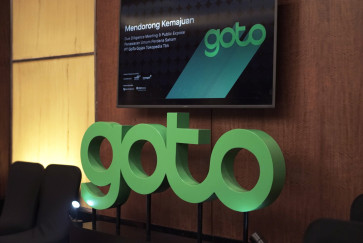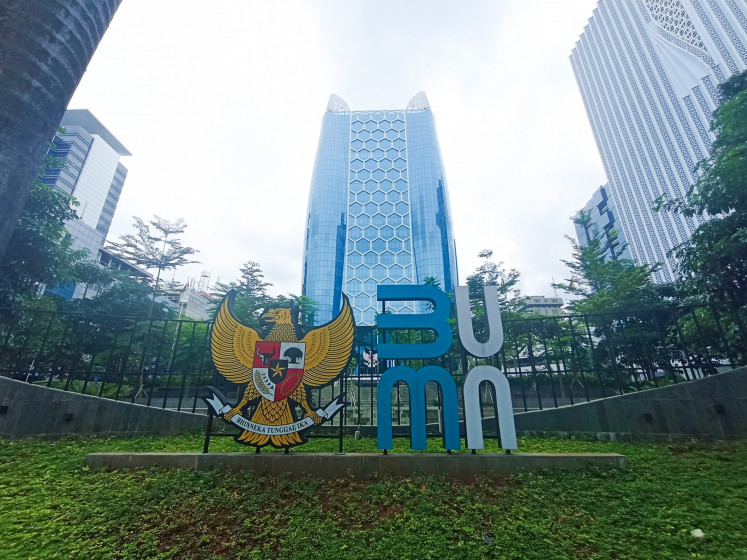'Hansik' and the long tradition of Korean cooking
Bondan Winarno: Courtesy of Korean Cultural CenterThe taste of food is often sacrificed when it comes to a healthy diet
Change text size
Gift Premium Articles
to Anyone

Bondan Winarno: Courtesy of Korean Cultural Center
The taste of food is often sacrificed when it comes to a healthy diet. In the case of Korean food, however, health and flavor come in a single package.
'One can taste the health value of the food,' said Indonesian foodie Bondan Winarno, the famous chef, who has also reviewed Korean restaurants in Jakarta and its satellite areas.
'The foods are thoughtfully prepared and made through slow-cooking techniques, without using much cooking oil.'
Korean cuisine, or hansik, is based on the philosophy of maintaining harmonious relationships between people and the Earth.
It explains the seasonality of the cuisine, which depends on picking produce in season or at their peak in terms of flavor. Hansik marks the changes of the four seasons on the dining table.
Besides its health value and diverse taste, other characteristics of Korean food are the traditions and meanings behind it.
Korean cuisine, according to the Korean Food Foundation, boasts a 5,000-year-long tradition, rich in symbolic meanings.
The traditional Korean metaphysical view is reflected in the use of five main colors ' blue, red, yellow, black and white ' in the dishes.
The five colors, or obangsaek, represent different spatial and seasonal elements ' as well as the five tastes of spicy, sweet, sour, salty and bitter.
The Korean Food Foundation, an NGO that has conducted research on Korean food as the basis for its promotional efforts, said that the balance and fusion of these colors and flavors signifies how people need to draw on the five cosmic energies in the universe ' the source of life.
The best example of food representing the philosophy is bibimbap, a bowl of rice mixed with beef different colored vegetables, either blanched or sautée, egg and gochujang (red pepper paste).
The philosophy of yin and yang can also be found in the chopsticks and spoons (both of which are called sujeo) used to eat Korean dishes.
Korean cuisine has the most vegetable-based dishes compared to other countries' cuisines.

'We consume greens with various fermented ingredients, such as ganjang [soy sauce], doenjang [ground soybeans paste] and gochujang. These seasonings, all are made of meju [fermented soybeans] and can be made into so many kinds of dishes,' said Korean ballad singer/songwriter Eru, the appointed ambassador of Korean food promotion in Indonesia.
The process to make the sauce seasonings, or jang, requires over two months to complete. The longer it takes, the better it tastes.
The art and science of fermentation is vital to Korean cuisine. Not only do they add to the taste of the dishes, but fermented foods contain an abundance of lactic acid, bacteria and dietary fibers and have anti-cancer properties.
The most famous Korean dish, kimchi, has hundreds of varieties, depending on the region and season.
Kimchi is pickled mustard greens preserved in earthenware jars ' some of the variants are spicy. It is a must side dish for every meal. Side dishes, or banchan, may include 14 different plated at one sitting.
Fresh-picked lettuce, perilla leaves and napa cabbage leaves are also consumed as ssam, the vegetable wrap for meat or raw fish.
Another favorite side dish is namul, which is prepared by seasoning fresh or parboiled wild herbs, roots, sprouts or vegetables with soy sauce, crushed sesame seeds, chopped scallion and minced garlic and garnished with few drops of sesame oil.
The staples of Korean food are rice, noodles and tofu eaten with meat and vegetable side dishes accompanied by soup.
The clear soup, or guk, is made by simmering vegetables, seafood or meat with seasoning in a generous amount of water. The thick, savory soup, or tang, most of the time takes over the main dish. The most well-known tang soups are galbitang (beef rib soup), seolleongtang (ox bone soup) and samgyetang (ginseng chicken soup).
Similar toother Asians cultures, Koreans prepared jjim (braised dishes) to treat guests on festive days. Galbijjim (braised short ribs), agwijjim (braised monkfish) and jeonbokjjim (braised abalone) are the most popular dishes.
The signature cooking method, however, is pan-frying as the opposite of deep-frying. Meat, fish, shellfish or vegetables can be made into jeon (pancake). The ingredients are first thinly sliced or minced and hand-shaped before individually coated with a mix of flour and egg batter.
Eru said that cooking is a serious business for Koreans.
'A cook has to pay attention to all elements of the dishes, including the freshness of the ingredients, the nutrition contained in the dishes, the flavor and even the color composition,' he said.









